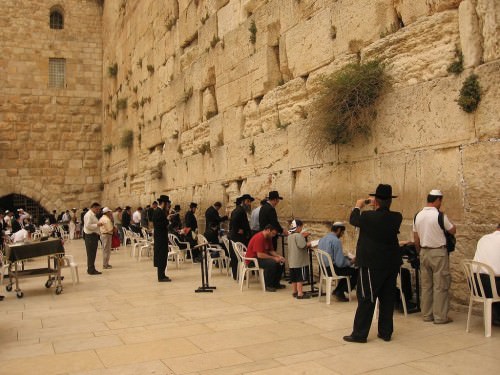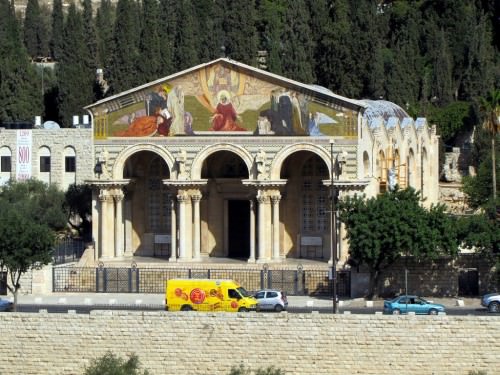Lies, deception, myths and Obama
A lie is like a noxious and perennial weed that is almost impossible to root out. So it is with the other weed; the delusion and myth of an Arab people who call themselves Arab-Palestinians and who dream of their fictitious past living in a land that belonged to them for millennia with their delusional capital, Jerusalem.
But that is the same fertile magical Arab imagination that gave us The Thousand and One Arabian Nights replete with fantastic tales of magic, wizards and Ali Baba. Both, the claim of a distinct Arab people called Palestinians and the Thousand and One Nights are an equal delusion and fantasies in the Arab mind.
As a matter of fact the Arabs residing in Greater Israel today are: Arabs from Syria, Egypt, Lebanon, Iraq, Saudi Arabia, Algeria, Libya, Sudan, etc.
The truth – not the delusion and fantasy – is that there was never an independent, sovereign Arab state called Palestine. Jerusalem was never the capital of any Arab polity in all of recorded history. Only one people has ever made Jerusalem its capital and only one people ever established their ancestral and biblical homeland between the River Jordan and the Mediterranean Sea: the remaining indigenous Jewish people.
In the years before Israel was Internationally reconstituted in 1948, the world referred to its Jewish residents as Palestinians. Indeed, the Palestinian military units fighting with the British Army in World War Two were Jewish to the man and woman. Few, if any, Arabs or Muslims fought against the Axis powers during that war and indeed many served in SS units; often willing collaborators with the Germans in murdering Jewish communities in the Balkans and elsewhere.
Remember, the word Palestine was established by the Roman to anger the Jews and was carried forward and used during the Mandate for Palestine over the territory that was granted by the League of Nations in 1920 to Great Britainass trustee for the Jewish people with the express international legal obligation of establishing in Palestine a Jewish homeland. At that time, the Palestine Mandate covered all of what is Israel -including Judea and Samaria, or what is erroneously called the West Bank – and present day Jordan.
What so many in the media forget, if they ever knew, is that after the Ottoman Empire was dismantled by the victorious Allies, France and Britain, at the end of World War One, many new Arab states were created with Palestine reserved for a Jewish homeland under international treaties executed by the Supreme Allied Powers.
But Britain violated the international treaties and reneged on its obligation to the Jews and tore away four fifths of the Mandate for Palestine territory in 1922 – that is all the land east of the Jordan River – and arbitrarily gave it away to the Hashemite Bedouin tribe. Immediately Jews were forbidden to live in what became Trans-Jordan and eventually the Kingdom of Jordan: An early example of ethnic cleansing and a blatant Arab apartheid.
The borders of the Mandate for Palestine as eventually set, determined Arab State of Jordan East of the Jordan River and Israel all the land West of the Jordan River including Jerusalem.
The January 1919 Faisal-Weizmann agreement confirms those terms, that Palestine is for the Jews.
Interestingly, Arabs and their leaders had rejected any notion of a separate Palestinian identity. For them, Palestineregion was merely a part of Greater Syria and the Arabs were indistinct from their neighbors. Indeed, the Syrian dictator, Assad, still plots for the return of Jordan, Israel and the disputed territories.
As far as Palestine was concerned to those Arab absentee landlords of the early years of the 20th century, living in the fleshpots of Cairo, Damascus and Beirut, the land was worthless: barren and malarial infested. Then the Jewish pioneers returning in the late 19th century began to purchase the wasted and barren land at exorbitant prices – much higher than fertile land in Iowa and Idaho – drain the swamps and redeem again the ancestral ancient beloved Jewish homeland.
Jewish development of the centuries old neglected and desolate land, restored in familial love through blood, sweat and tears, ironically it brought into the territory hundreds of thousands of illegal Arab aliens who found livelihoods that were unavailable in the stagnant and corrupt neighboring Arab societies.
The British authorities invariably turned a blind eye to the flood of Arab illegals seeing in them a stick to beat the Jewish residents. Herein lays the genesis of the present day Arab claim to all the land and their descendant’s stated threat to extirpate any and all Jewish life within its borders.
So many well-meaning people in the West, as well as latent anti-Semites, have fallen hook, line and sinker for the myth and delusion of an Arab-Palestinian homeland called Palestine. So many people now believe the delusion, fantasy and false claim by the well-funded Arab propaganda machine that the Jews came and stole it.
But though it sounds affecting and no doubt to the liberal mind particularly emotional with all the tugging of the heart strings that it implies, it is still an absolute lie and deception just like the weed that can never be fully uprooted.
For so many people who are either ignorant, turn a deaf ear or hard hearted towards the Jewish state, they are unaware and or refuse to believe that the Jews were the aboriginal indigenous inhabitants for two millennia before the Muslim religion was created and that Muslim armies swarmed out of Arabia with a Koran in one hand and a sword in the other to occupy vast territories in the name of Allah.
The pity is that the bible as history is there for all to read. Sadly, so many ignore what is written.
The Arabs have spread over 12 million square kilometers in the Middle East and into North Africa (the Maghreb). Israel’s territory is barely 21,000 square kilometers and may soon be reduced further if its biblical ancestral heartland of Judea and Samaria is torn from it to create in its midst a terror state called Palestine: the 23rd Arab state (just like Gaza).
When the world extends to the million Jewish refugees who were persecuted and expelled with all their assets confiscated from their millenium residence in the Arab lands nearly 70 years ago the same sympathetic obsession that they extend to the Arabs who needlessly left Israel at the urging's of the corrupt Arab League and the six attacking Arab armies, and when Arab-Palestinians stop indoctrinating its children and the masses to commit terror and violence, then there maybe hope for a better international community than what exists at the present time.
When the same world expresses horror and condemns Jordan for confiscating Jewish territory and assets and barring Jews over 80 years ago from living in what was the Palestine Mandate territory east of the Jordan River, and when the world condemns the so-called Arab-Palestinian Authority from barring Jews within its territory now and stop indoctrinating their children and the masses to commit terror and violence and glorify suicide bombers, then there may be equal hope for a redeemed international community.
Meanwhile the Jews – the real authentic indigenous Palestinians – strive to live within the miniscule territory that is the Jewish state, denied even one day of peace from their genocidal Arab and Muslim neighbors. And then there is the American president, Barack Hussein Obama, who will not rest until Israel crumbles under his malevolent gaze and swaggering intimidation.





![Jerusalem - culture & religious coexistence ?? - UNESCO World Heritage - [By Stathis Chionidis] - Stathis Chionidis](http://mw2.google.com/mw-panoramio/photos/small/103138646.jpg)
![Dome of the Rock - Temple Mount - UNESCO World Heritage -Blue Nights in Jerusalem - [By Stathis Chionidis] - Stathis Chionidis](http://static.panoramio.com/photos/iw-thumbnail/99634084.jpg)
![Dome of the Rock & Dome of the Chain - Temple Mount - Jerusalem - [By Stathis Chionidis] - Stathis Chionidis](http://static.panoramio.com/photos/iw-thumbnail/101595873.jpg)

![Dome Of the Rock - Sensación de gran pantera negra - Jerusalem - [By Stathis Chionidis] - Stathis Chionidis](http://static.panoramio.com/photos/iw-thumbnail/101529780.jpg)



























